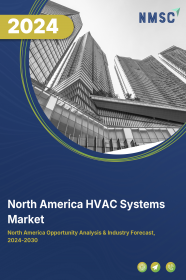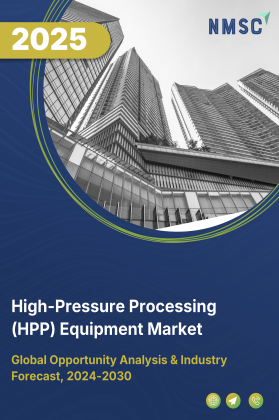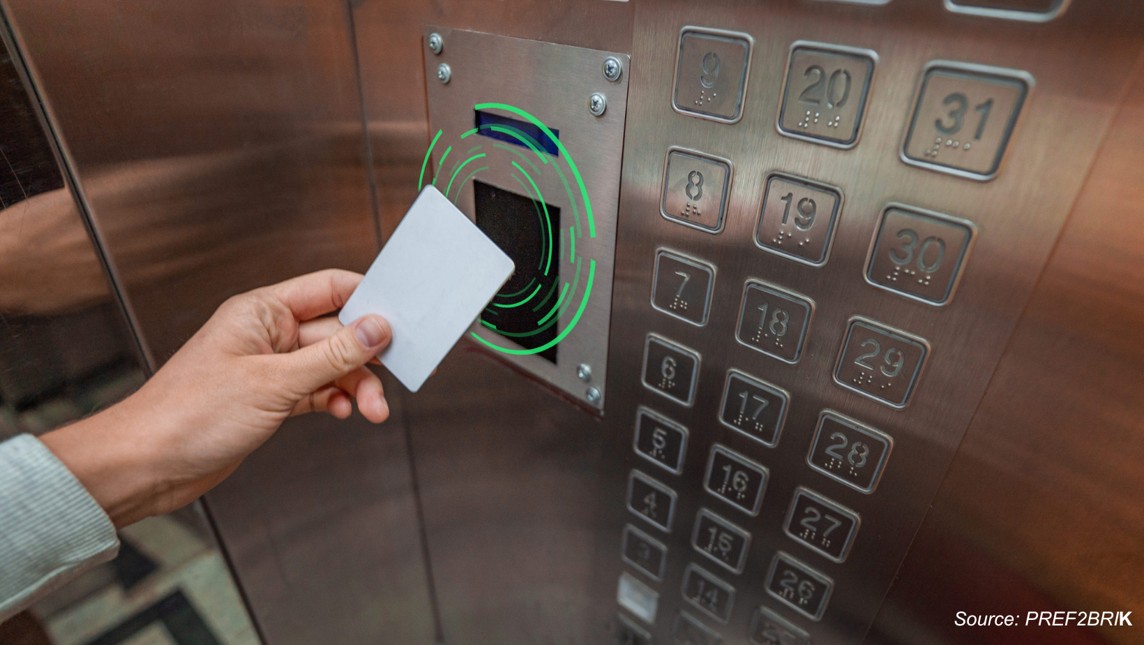
North America HVAC Systems Market by Equipment (Room‐Level Air Conditioners, Split Air Conditioners, Packaged & Central AC Units, Chillers, Heating Equipment, Ventilation Equipment, Humidity Control, Cooling Towers, and Controls & Thermostats), by System Type (Centralized Systems, and Others), by Implementation Type, by Technology (Inverter Technology, and Others), by Energy Efficiency, by Capacity, by Installation, by End User – Global Opportunity Analysis and Industry Forecast, 2024– 2030
Industry: Construction & Manufacturing | Publish Date: 16-Oct-2025 | No of Pages: 134 | No. of Tables: 218 | No. of Figures: 143 | Format: PDF | Report Code : CM1913
Market Definition
The North America HVAC System Market size was valued at USD 65.76 billion in 2023, and is predicted to reach USD 99.21 billion by 2030, at a CAGR of 5.5% from 2024 to 2030.
HVAC (Heating, Ventilation, and Air Conditioning) refers to the technology and systems used in buildings to regulate indoor environmental conditions such as temperature, humidity, and air quality to ensure comfort and safety for occupants. Heating systems provide warmth during colder months, ventilation systems circulate and replenish indoor air, and air conditioning systems cool and dehumidify indoor air during warmer months.
HVAC systems offer several advantages, including improved occupant comfort and health, increased energy efficiency leading to cost savings, better indoor air quality through filtration and ventilation, precise temperature control for enhanced productivity in commercial settings, and protection of building infrastructure from extreme weather conditions. Additionally, these systems can be designed to meet specific requirements, contributing to sustainability goals by reducing carbon emissions and promoting eco-friendly practices in building operations.
Growing Demand for Improved Indoor and Outdoor Air Quality Drive the HVAC System Market
The growing demand for improved indoor and outdoor air quality drives the HVAC system market. The increasing awareness regarding the importance of air quality is compelling both residential and commercial property owners to invest in HVAC systems that can effectively filter and purify indoor air while minimizing outdoor emissions.
As a result, there is a rising demand for advanced HVAC systems equipped with modern filtration technologies, such as HEPA filters and UV-C light sterilization that can eliminate pollutants, allergens, and pathogens from indoor air. This trend is driving HVAC manufacturers to innovate and develop new solutions that prioritize air quality improvement, thereby fueling the growth of the HVAC system market.
Increasing Energy-Saving Regulations Drives the HVAC System Market
The implementation of residential energy-saving regulations drives the HVAC system market. These regulations drive the HVAC system market by requiring more energy-efficient systems than before and prompting manufacturers to develop and produce HVAC units that comply with these standards.
Consequently, consumers are inclined to invest in more efficient HVAC systems to meet regulatory requirements and reduce energy bills. Additionally, these regulations raise awareness among homeowners about the benefits of energy-efficient HVAC systems, leading to a higher demand for such products.
This increased consumer awareness drives manufacturers to innovate and offer a wider range of efficient products to meet the growing market needs. This, in turn, further fuels the demand for energy-efficient HVAC systems.
Regulatory Compliance Associated with HVAC Systems Impede the Market Expansion
Regulatory compliance poses a significant obstacle to the growth of the HVAC industry. This involves adhering to a multitude of laws, regulations, and standards set forth by governmental bodies and industry organizations.
These regulations cover various aspects including energy efficiency, emissions, refrigerants, and building codes. Compliance with such regulations requires substantial investments in research, development, and technology to ensure that products and services meet the prescribed standards.
However, for smaller companies or those with limited resources, navigating this intricate regulatory landscape can be particularly daunting, potentially hindering their market entry or expansion. Moreover, compliance efforts often divert resources away from innovation and product development, as companies prioritize meeting regulatory requirements over investing in new technologies or enhancing existing ones.
Consequently, regulatory compliance acts as a restraint on the growth and development of the HVAC market, imposing additional costs and complexities on industry players and impeding their ability to fully capitalize on market opportunities.
IoT Integration Creates Ample Opportunities for the HVAC System Market
The integration of Internet of Things (IoT) technology presents a substantial market opportunity for the HVAC industry. This integration fosters remote control capabilities, heightened energy efficiency, and predictive maintenance solutions.
By integrating IoT devices and sensors into HVAC systems, users gain the capability to remotely monitor and adjust settings, optimize energy consumption, and proactively address maintenance issues before they escalate.
This enhancement elevates user experience and comfort levels, diminishes energy costs, and extends the operational lifespan of HVAC equipment. With escalating demand for buildings that exceed the efficiency of current infrastructure, the adoption of IoT integration is expected to yield plentiful opportunities within the HVAC system market.
The U.S. Holds the Dominant Market Share in North America HVAC System Market
Urbanization and construction trends are pivotal drivers of growth in the HVAC industry. As urban populations swell, the demand for residential, commercial, and industrial buildings escalates, necessitating the installation of HVAC systems in diverse structures such as apartments, office complexes, shopping centers, and factories.
Concurrently, construction practices are evolving, with a marked emphasis on sustainability and energy efficiency. Green building initiatives, propelled by government mandates and environmental concerns, dictate stringent standards for HVAC systems in new constructions, fostering a market for eco-friendly solutions.
Furthermore, the trend towards renovating and retrofitting existing buildings amplifies the need for HVAC upgrades, aligning with modern energy-saving technologies. Technological integration, seen through the amalgamation of HVAC systems with building automation and smart technology, enhances overall building performance and energy efficiency.
This synergy of urbanization, sustainable construction, and technological advancement underscores the pivotal role played by urbanization and construction trends in propelling the growth of the HVAC industry. The increasing emphasis on enhanced indoor and outdoor air quality acts as a key catalyst driving growth within the HVAC system market. Growing recognition of the vital importance of air quality compels both residential and commercial property owners to invest in HVAC systems capable of efficiently filtering and purifying indoor air while reducing outdoor emissions.
Consequently, there is a rising demand for advanced HVAC systems equipped with state-of-the-art filtration technologies including HEPA filters and UV-C light sterilization, designed to eliminate pollutants, allergens, and pathogens from indoor spaces. This trend incentivizes HVAC manufacturers to innovate and develop new solutions prioritizing air quality enhancement, thereby propelling the expansion of the HVAC system market.
Mexico to Witness Substantial Growth in the North America HVAC System Market
The implementation of residential energy-saving regulations drives the HVAC system market. These regulations drive the HVAC system market by requiring more energy-efficient systems than before and prompting manufacturers to develop and produce HVAC units that comply with these standards. Consequently, consumers are inclined to invest in more efficient HVAC systems to meet regulatory requirements and reduce energy bills.
Additionally, these regulations raise awareness among homeowners about the benefits of energy-efficient HVAC systems, leading to a higher demand for such products. This increased consumer awareness drives manufacturers to innovate and offer a wider range of efficient products to meet the growing market needs. This, in turn, further fuels the demand for energy-efficient HVAC systems.
Environmental concerns play a pivotal role in driving growth within the HVAC systems industry. With increased awareness of issues such as climate change, air pollution, and ozone depletion, there's mounting pressure for sustainable practices and regulations. Governments worldwide enforce mandates to reduce the environmental impact of HVAC systems, leading to the development and adoption of eco-friendly technologies.
Manufacturers invest in research and development to create systems using alternative refrigerants with lower global warming potential and enhance energy efficiency. Consumer demand for energy-efficient solutions aligns with regulatory goals, stimulating the market for high-efficiency HVAC equipment.
Moreover, the emphasis on indoor air quality (IAQ) fosters innovation in filtration, ventilation, and purification technologies. This concerted effort towards sustainability not only addresses environmental concerns but also drives market growth by meeting the evolving needs of stakeholders while creating healthier indoor environments.
Competitive Landscape
The market players operating in the North America HVAC System market include AAON, Inc., Cambridge Air Solutions, Carrier Global Corporation, Daikin Industries, Electrolux AB, Fujitsu General America, Haier Group, Lennox International, LG Electronics, Midea Group Co., Ltd., Mitsubishi Electric Corporation, Nortek, Inc., Panasonic Corporation, Rheem Manufacturing Company, Robert Bosch GmbH, Samsung HVAC, LLC, Seeley International, Siemens AG, Trane Technologies, Whirlpool Corporation, and others.
North America HVAC System Market Key Segments
By Equipment
-
Room‐Level Air Conditioners
-
Window
-
Portable
-
Cassette (ceiling-mounted)
-
Floor-standing console
-
-
Split Air Conditioners
-
Single-split (1 indoor + 1 outdoor)
-
Multi-split (≥2 indoors + 1 outdoor)
-
VRF/VRV
-
-
Packaged & Central AC Units
-
Rooftop packaged units
-
Self-contained packaged units
-
Central chiller and AHU systems
-
-
Chillers
-
Air-cooled
-
Water-cooled
-
Absorption
-
-
Heating Equipment
-
Heat Pumps
-
Furnaces
-
Boilers
-
Unit Heaters
-
-
Ventilation Equipment
-
Air Handling Units (AHUs)
-
Fans & Blowers
-
Air Filtration Systems
-
Air Purification Systems
-
-
Humidity Control
-
Humidifiers
-
Dehumidifiers
-
-
Cooling Towers
-
Controls & Thermostats
By System Type
-
Centralized Systems
-
Decentralized Systems
-
Hybrid Systems
By Implementation Type
-
New Construction Buildings
-
Retrofit Buildings
By Technology
-
Inverter Technology
-
Non-Inverter Technology
-
Smart/IoT-enabled
-
Conventional
By Energy Efficiency
-
1 Star
-
2 Star
-
3 Star
-
4 Star
-
5 Star
By Capacity
-
Up to 1.5 Ton
-
1.5-3 Ton
-
3-5 Ton
-
Above 5 Ton
By Installation/Mounting
-
Wall-mounted
-
Ceiling-mounted
-
Floor-standing
-
Ducted
-
Window-mounted
-
Portable
By End User
-
Commercial
-
Offices
-
Hospitality (Hotels, Restaurants)
-
Healthcare
-
Education
-
Retail
-
Airports
-
-
Residential
-
Industrial
By Country
-
The U.S.
-
Canada
-
Mexico
Key Players
-
AAON, Inc.
-
Cambridge Air Solutions
-
Carrier Global Corporation
-
Daikin Industries
-
Electrolux AB
-
Fujitsu General America
-
Haier Group
-
Lennox International
-
LG Electronics
-
Midea Group Co., Ltd.
-
Mitsubishi Electric Corporation
-
Nortek, Inc.
-
Panasonic Corporation
-
Rheem Manufacturing Company
-
Robert Bosch GmbH
-
Samsung HVAC, LLC
-
Seeley International
-
Siemens AG
-
Trane Technologies
-
Whirlpool Corporation
Report Scope and Segmentation
|
Parameters |
Details |
|
Market Size in 2023 |
USD 65.76 Billion |
|
Revenue Forecast in 2030 |
USD 99.21 Billion |
|
Growth Rate |
CAGR of 5.5% from 2024 to 2030 |
|
Analysis Period |
2023–2030 |
|
Base Year Considered |
2023 |
|
Forecast Period |
2024–2030 |
|
Market Size Estimation |
Billion (USD) |
|
Growth Factors |
|
|
Countries Covered |
3 |
|
Companies Profiled |
20 |
|
Market Share |
Available for 10 companies |
|
Customization Scope |
Free customization (equivalent up to 80 working hours of analysts) after purchase. Addition or alteration to country, regional, and segment scope. |
|
Pricing and Purchase Options |
Avail customized purchase options to meet your exact research needs. |

















 Speak to Our Analyst
Speak to Our Analyst
























